It has been a great year for those that crave internet on the go.
Making waves was the disappearance of old RVer favorite Millenicom from the scene, the October double-data deals, and the surprising (but short-lived) return of Verizon unlimited data plans.
This year we've also seen the demise of contract prevalence to obtain cellular service with any of the big carriers, increases in data buckets available and shared data buckets becoming more the norm.
The big-four carriers have all been hard at work evolving their networks and capabilities, and overall we are all getting more speed and more data for less cost than ever before.
This post is a look back at the major developments of the past year for each of the big four carriers, and a look ahead at some of what is expected in 2015.
Hopefully 2015 will prove to be even more exciting than 2014 has been! And we hear at the RV Mobile Internet Resource Center will continue to report on it, and help RVers navigate this always changing landscape.
 This article was originally released exclusively for our premium members of our Mobile Internet Aficionados group.
This article was originally released exclusively for our premium members of our Mobile Internet Aficionados group. If you'd also like early access to our new in-depth material - please consider joining. You'll also get access to our Q&A forums, webinars, no-advertising on the site and discounts on other services.
Table of Contents
Verizon
 America's largest carrier has comfortably retained the lead in LTE deployments, and remains the best single choice for frequent travelers.
America's largest carrier has comfortably retained the lead in LTE deployments, and remains the best single choice for frequent travelers.
Now that Verizon has rolled out 700MHz LTE band-13 nationwide to cover over 308 million people, in 2014 the focus has been on enhancing speeds and capacity by expanding service onto the 1700/2100MHz LTE band-4 frequencies, dubbed by Verizon as "XLTE" - which is now live in over 400 markets.
For even more LTE capability - just recently Verizon has begun to start shutting down 3G network capacity to make more room for LTE. The 1900MHz PCS bands (LTE band-2) has already begun to be migrated from 3G to LTE service in New York City, and in 2015 many more areas will see 3G service decreased as additional LTE capacity is ramped up.
The other big news in Verizon's infrastructure for 2014 has been the nationwide deployment of VoLTE (voice over LTE) in September - which on compatible devices transitions voice traffic from the old 2G network onto the modern LTE network. This also at last opens the door to simultaneous voice and data on Verizon iPhones - eliminating one of AT&T's longest running advantages.
Though Verizon's unlimited data plans have remained officially extinct, a glitch related to the iPhone 6 launch brought these plans back from the dead for a brief period of time this fall. Those who were paying attention (we did our very best to make sure our Mobile Internet Aficionado members were amongst them) were able to jump on this opportunity, and thousands of new grandfathered unlimited data plans were spawned.
Throughout 2015 Verizon will be pushing less towards enhancing coverage areas - and instead will be focused on increasing capacity and speed by deploying LTE onto three frequency bands - 700MHz band-13, 1700/2100MHz AWS band-4, and now 1900MHz LTE band-2. And in 2015 Verizon will begin using LTE-Advanced Carrier Aggregation features to allow bands to be combined for even higher peak speeds. To make sure you are best able to take advantage of all Verizon can offer - make sure that new devices you purchase support all of these bands, and carrier aggregation too. And if you have a 3G-only Verizon device, 2015 is the year to upgrade - before the old 3G network starts to vanish right out from under you! But AT&T controls less 700MHz spectrum than Verizon - and thus AT&T's LTE band-17 service in many areas of the country actually barely outperforms, and sometimes even underperforms, AT&T's older "4G" HSPA+ network. To make up the difference, AT&T has big plans to roll out LTE service on other frequency bands, and to tie these frequency bands together with LTE-Advanced Carrier Aggregation. In 2014 AT&T began rolling out service on LTE band-4 (AWS 1700/2100MHz), LTE band-2 (1900MHz), and AT&T has even begun to take advantage of carrier aggregation too. AT&T has also been working on expanding coverage - all the way across the continent. AT&T has announced plans to buy Mexican carrier Iusacell, intending to “create a first-ever North American Mobile Service area for U.S. customers calling or visiting Mexico, and Mexican customers calling or visiting the United States.” The one area AT&T has been leading Verizon is in pricing for heavy data users - continuing to offer October's "double data deals" long after Verizon let its equivalent promotion expire. With the double-data pricing still in effect as the year rolls to a close, we can't help but hope that AT&T is considering making these prices permanent. 2014 is the year we were able to proclaim the AT&T network being a viable primary option for RVers who need nationwide access, moving them out of being the secondary back-up option. We expect to see AT&T close the Iusacell deal in early 2014 which has just been approved and roll out plans that include coverage in Mexico and Canada, potentially creating a great new option for international traveling RVers. And just as importantly - AT&T will be making efforts to beef up its LTE network by rolling out more spectrum and frequency bands in more and more cities as the year progresses. In addition to expanding onto LTE band-2 and LTE band-4, in 2015 AT&T will start taking advantage of the download-only 700MHz LTE band-29 - which uses carrier aggregation to add much needed download capacity to other LTE frequency bands. If you are shopping for a new AT&T device, check the specs to make sure all these bands are covered! Maybe at some point AT&T will even come up with a clever branding label for its extended service, like Verizon's XLTE, Sprint's Spark, or T-Mobile's Wideband-LTE. AT&T has been slowly rolling out voice over LTE (VoLTE) in a few select markets and on a few select devices, but in 2015 they will follow Verizon and T-Mobile in taking this capability national. AT&T and Verizon have even announced plans to work together on VoLTE interoperability - allowing for higher quality audio even for VoLTE calls between networks. AT&T is also chasing after T-Mobile's leadership in deploying WiFi calling (aka 'Voice Over WiFi' or VoWiFi) - but while T-Mobile has already made this a core feature, AT&T is only saying "sometime in 2015". When it at last comes, this will allow AT&T phones to make and receive calls in WiFi areas, even outside of AT&T cellular coverage. AT&T has a big todo list for 2015 - but if it delivers it will be in a very solid position. T-Mobile has been a leader in rolling out VoLTE (voice over LTE) in 2014, as well as being the first with full support for WiFi Calling (aka VoWiFi) that will seamlessly handoff a call between cellular and WiFi. Perhaps the most exciting move T-Mobile made in 2014 was rolling out roll-over data - a feature we have long been craving. T-Mobile has also kept "unlimited" plans on offer too, and began to offer free music streaming and even free international roaming on most T-Mobile plans. On the network front - T-Mobile has expanded its LTE footprint to cover 260 million people, but T-Mobile coverage remains sorely lacking in smaller towns and rural areas, and even in covered areas T-Mobile has more dead spots and worse in-building coverage. But when T-Mobile has coverage, they rock it - with an incredibly fast LTE network deployed on LTE band-4 1700MHz/2100MHz spectrum. T-Mobile calls the cities with especially large bandwidth allotments "Wideband LTE" areas, and there are currently 27 major market with Wideband LTE support. But the biggest thing T-Mobile needs to tackle in 2015 is getting more low-frequency spectrum deployed. Low frequency spectrum travels further and penetrates deeper into buildings, and T-Mobile so far has essentially none in service. T-Mobile has however acquired 700MHz LTE band-12 spectrum that will be key to solving its problems - but so far very few devices have been released that support band-12. To make LTE band-12 viable, T-Mobile will need to get more device makers on board to take advantage of the network as they start to deploy it. T-Mobile has also been putting pressure on the FCC to force the bigger carriers into charging more reasonable roaming rates. The FCC has agreed in theory that T-Mobile has a case, and if T-Mobile is successful in getting better roaming rate deals then at last T-Mobile's lack of coverage may cease to be quite so painful. Sprint has a history of scuttling plans - they needed to start from scratch building a 4G network after abandoning its WiMax network (scheduled for shutdown completely in November 2015) to join the rest of the industry in embracing LTE. Sprint has been pushing hard to do so throughout 2014 - and now claims 260 million people in LTE covered areas. Sprint is taking a three-band approach to rolling out LTE - with 800MHz low-frequency LTE band-26 for long-range and rural coverage, 1900MHz LTE band-25 for mid-range, and 2.5GHz LTE-band band-41 (repurposed WiMax frequencies) for faster speeds and more capacity in core urban areas. All together - this 3-band system is being branded as "Sprint Spark", and all devices Sprint currently sells are ready for this tri-band future - even though only 1900MHz LTE has been deployed in most Sprint areas. In 2015 Sprint will begin rolling out the 800MHz Spark frequencies to greatly improve coverage areas, and will also start to deploy devices that support LTE-Advanced Carrier Aggregation to let multiple Spark channels bond for more speed. Sprint has not announced plans for VoLTE, nor comprehensive WiFi calling support - though perhaps some progress on these technologies will be made in 2015. Sprint's biggest challenge may be in coming up with pricing and plans that are compelling enough to lure people in to give Sprint's network a chance. Additional Resources: The Four Major US Carriers – Which is Best for RVers? Cellular Carrier Data Comparisons – Pricing & Plan Guide And of course - the biggest mobile internet news of the year for RVers has been the launch of RVMobileInternet.com and the premium Mobile Internet Aficionados group. It has been a complete blessing to us at how well received this resource center has been embraced.. and it is our honor to be able to bring it to you! Thank you all for joining us here, and may you all have a very happy New Year! AT&T
 AT&T has spent 2014 chasing Verizon, and has made great strides in expanding its LTE coverage footprint to reach over 300 million people - almost closing the LTE coverage gap.
AT&T has spent 2014 chasing Verizon, and has made great strides in expanding its LTE coverage footprint to reach over 300 million people - almost closing the LTE coverage gap.T-Mobile
 T-Mobile has been the fun to watch in 2014. Though they are the fourth largest carrier with a coverage map that lags way behind the two leaders - they have been growing faster than anyone else, and odds are T-Mobile will soon surpass Sprint to become #3 nationwide.
T-Mobile has been the fun to watch in 2014. Though they are the fourth largest carrier with a coverage map that lags way behind the two leaders - they have been growing faster than anyone else, and odds are T-Mobile will soon surpass Sprint to become #3 nationwide.Sprint
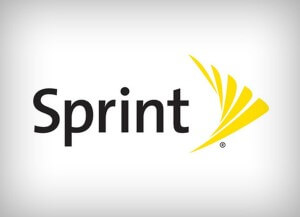 Sprint has had a challenging year reinventing itself, bringing in a new CEO and a new vision after scuttling the plans to try and acquire T-Mobile that had almost come to fruition over the summer.
Sprint has had a challenging year reinventing itself, bringing in a new CEO and a new vision after scuttling the plans to try and acquire T-Mobile that had almost come to fruition over the summer.
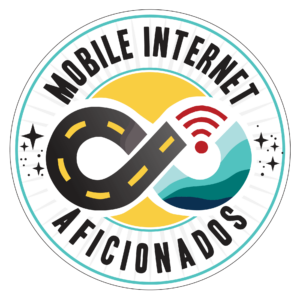
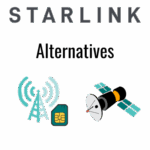
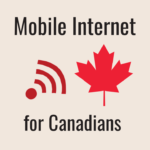
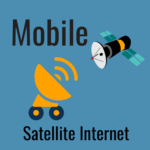
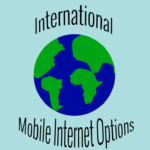


 Mobile Internet Resource Center (dba Two Steps Beyond LLC) is founded by Chris & Cherie of
Mobile Internet Resource Center (dba Two Steps Beyond LLC) is founded by Chris & Cherie of